Magnificent Obsession

Brief Synopsis
Cast & Crew
John M. Stahl
Irene Dunne
Robert Taylor
Charles Butterworth
Betty Furness
Sara Haden
Film Details
Technical Specs

Synopsis
Helen Hudson mourns the sudden death of her husband, who drowned because the hospital's only pulmotor was being used on Robert Merrick, a selfish and spoiled youth who was drunk at the time he nearly drowned. Dr. Hudson was a brilliant surgeon and philanthropist, and Helen is surprised to find that he had given away large sums of money during his lifetime. Several people, including a sculptor named Randolph, reveal that they were the beneficiaries of Dr. Hudson's money, and that he helped a great many people in secret. Robert falls in love with Helen at first sight, but his efforts are fruitless, as she holds him responsible for her husband's death. One night Robert gets drunk and is given refuge by Randolph, who informs him that Dr. Hudson taught him how to "make contact with a source of infinite power," and that by making use of this information, Randolph elevated himself from a simple stonecutter to a sculptor. Dr. Hudson's secret, which Randolph reveals to Robert, is to give help to people in utter secrecy, and never take back anything. Robert takes this information lightly but later, gives a panhandler some cash and then sees Helen and believes she is his reward. He insists she allow him to take her home, but when he runs out of gas and becomes amorous, she gets out and is hit by another car. Helen recovers, but loses her sight due to brain damage. Robert watches her progress closely and befriends her, calling himself Dr. Robert so she will not know who he is. When he finds out that her stocks and bonds are worthless, he secretly has them replaced with some of his own and then investigates the possibility of a cure through specialists. Helen's sister-in-law, Joyce, and her friend, Nancy Ashford, meet Robert, but keep his identity a secret. When Helen is approached by several eye specialists, she attributes it to her husband's reknown, unaware of Robert's interest. Helen travels to Paris to consult with the eye specialists, where she finds out that her blindness is incurable and falls into a deep depression. Robert's arrival cheers her immeasurably, and after he proposes to her and confesses his true identity, she forgives him for everything and says he will receive his answer in the morning. By morning, Helen has disappeared, leaving a note that she is afraid of being a burden to everyone and intends to take up life on her own. Six years later, Robert returns to America a Nobel-Prize winning brain surgeon, having completed his medical education. He is greeted by Helen's family and friends, who have not seen her in many years, and then by Randolph, whom Robert recalls as the man who taught him about Dr. Hudson's "magnificent obsession." Randolph tells him that Helen is urgently in need of surgery, and Robert departs immediately and performs the operation. The surgery is a success, and when Helen awakens, she has her beloved Robert at her side and her sight recovered.

Director

John M. Stahl
Cast
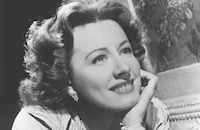
Irene Dunne

Robert Taylor

Charles Butterworth
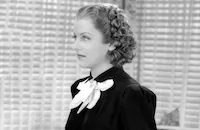
Betty Furness

Sara Haden

Ralph Morgan
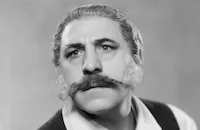
Henry Armetta

Gilbert Emery

Arthur Treacher
Beryl Mercer
Alice Ardell
Theodore Von Eltz
Sidney Bracey
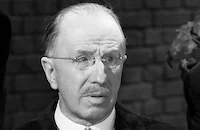
Arthur Hoyt
Cora Sue Collins
Lowell Durham
Alan Davis
Crauford Kent
Edward Earle
Inez Courtney
Marion Clayton
Norma Drew
Maidel Turner
William Arnold
Leah Winslow
Ethel Sykes
Sherry Hall
William Worthington
Louis Lavoie
Oscar Rudolph
Carol Wines
Margaret Brayton
Jane Keckley
Lillian West
Margaret Morris
Georgette Rhodes
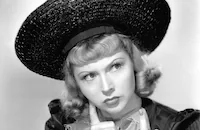
Joyce Compton
Norma Drew
Helen Brown
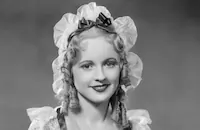
Lucile Browne
Melissa Teneyck
Ray Brown
Gretta Gould
Beth Hazelton
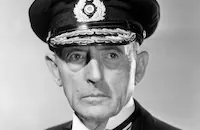
Frank Reicher

Leonard Mudie
Arnold Korff
William Stack
Frederic Roland
Fredrik Vogeding
Charles Fallon
John Porry
Allen Connor
Jean Debriac
George Davis
Charles Coleman
Jane Barnes
Ara Haswell
Clive Morgan
Harry Watson
Otto Hoffman

Walter Miller

James Flavin
Isabelle Lemal

Walter Walker
Vance Carroll
Henry Hale
Louis Natheaux
Jack Hatfield
Gladden James
Donald Kerr
Ray Johnson
Andy White
Paddy O'flynn
Monty Vandegrift
Purnell Pratt
Gino Corrado
Mickey Daniels
Sumner Getchell
Rollo Lloyd
Juan De La Cruz
Eddy Chandler
Frank Mayo
John St. Polis
George Hackathorne

Antoinette Lees
Sid Marion

Lucien Littlefield
Crew
E. M. Asher
Edward Brymer
Milton Carruth
William Dodds
Finley Peter Dunne Jr.
Philip Dunne
Mary Frey
John P. Fulton
Charles Gould
Maurice Hahline
Charles D. Hall
Victor Heerman
David Hertz
Alan Jones
Aben Kandel
Gilbert Kurland
Carl Laemmle
Bert Lytell
Sarah Y. Mason
Joseph Mcdonough
Elizabeth Meehan
John J. Mescall
Fred S. Meyer
Alden Nash
George O'neil
Jack Pierce
Maurice Pivar
Cecil E. Reynolds
John M. Stahl
Lynn Starling
Peggy Vaughn
Eugene Walter
Franz Waxman
Vera West
Rena Yale

Videos
Movie Clip

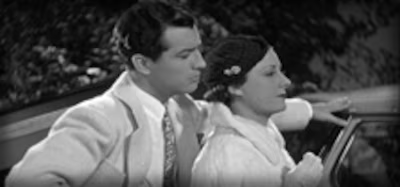

Film Details
Technical Specs

Articles
Magnificent Obsession (1936)
The 1929 novel Magnificent Obsession by former minister Lloyd C. Douglas had been a best-seller and something of a phenomenon for its message of enriching one's own life through philanthropy and acts of compassion done in secret. The story of redemption and romance was a natural for a big screen incarnation. Universal Studios stalwart John Stahl, a rare director/producer in the 1930s, was given the assignment and it was a good fit for Universal Studio's man of melodrama, who had made hits of Back Street (1932) and Imitation of Life (1934). He would downplay the religious aspect of Douglas' spiritual message and transform the story into a heart-tugging romantic melodrama of personal redemption through selflessness.
Helen Hudson is a newlywed married to a beloved (and much older) doctor whose public generosity was exceeded only by his private acts of charity, which are unknown even to his wife and daughter until after his sudden death (off-screen) in the opening moments of the film. While his death is a result of natural causes, the blame falls to Robert Merrick, a reckless millionaire playboy whose antics prevented life-saving equipment from reaching the aged doctor in time to resuscitate him. To add insult to injury, the self-absorbed playboy amorously pursues the widow while she's still in mourning and keeps up his insensitive attentions with a persistence that finally drives her into a tragic accident.
Irene Dunne (the star of Stahl's Back Street) was cast as Helen and her stardom was the anchor for the picture. The search for her leading man took more time. Though the dapper Douglas Fairbanks, Jr. was under consideration at one point, Universal executives found their man when they saw MGM contract player Robert Taylor in Broadway Melody of 1936 (which was actually released in 1935). He was no singer but his good looks and onscreen confidence convinced both Stahl and Dunne that he was right for the role of the recklessly charming and hopelessly irresponsible wastrel who redeems himself by dedicating his life to good deeds and the service of others. The philosophy is delivered by a selfless sculptor (Ralph Morgan) who, in one scene, offers a drunk Robert a place to sleep it off. When Robert wakes up the next morning, he opens his eyes to find himself surrounded by statues of angels and Madonnas, which is both a foreshadowing of the spiritual lesson to come and a humorous sight gag (is he in heaven?). The irony is that the philosophy originates from Helen's deceased husband, who shared it with the sculptor years before and changed the man's life. "It was he who taught me how to get in contact with infinite power," he explains to Robert, introducing him to the philosophy of self-fulfillment through acts of charity performed quietly and in secret. It's the beginning of Robert's redemption from bon vivant to humanitarian, and the first step to repairing the harm he has caused Helen.
Dunne was 35 and Taylor only 24 at the time they made the film but the age difference doesn't seem all that great on screen, thanks largely to Taylor's cocky confidence and almost ageless good looks. When his character makes the transition from self-absorbed playboy to dedicated doctor and committed philanthropist, you can see the guilt and regret in his face and the seriousness in his new demeanor. Once bouncing with energy, he becomes more measured and restrained, a man doing penance for a wasted life and feeling the weight of every sin of his past. Dunne brings both dignity and strength to the role of Helen, who bravely faces every tragic turn with courage and optimism. Betty Furness plays her protective stepdaughter, deft character actor Charles Butterworth (whose dry comic style and deadpan countenance made him look older than he really was) is the "young" man wooing the stepdaughter and Sara Haden (who later played Aunt Polly in over a dozen "Andy Hardy" films) is Helen's best friend, a no-nonsense nurse who tangles with Robert in his playboy days but comes to respect him. Cinematographer John J. Mescall, famed for the shadowy gothic visuals of Bride of Frankenstein (1935) and Edgar Ulmer's The Black Cat (1934), shot the film with a cool B&W palette and composer Franz Waxman is credited as "Musical Director."
The romantic tearjerker with a spiritual message became a big hit and catapulted Taylor, up until then a light leading man, to stardom. It was remade almost two decades later by Douglas Sirk, who in some ways was Stahl's heir apparent as Universal's maestro of the melodrama. His 1954 film remained true to Stahl's adaptation, keeping many of the romantic additions and melodramatic complications added for the 1935 film. And as with Stahl's film, the remake raised its male lead, contract player and light romantic lead Rock Hudson, to stardom.
Producer: John M. Stahl
Director: John M. Stahl
Screenplay: Sarah Y. Mason, Victor Heerman, George O'Neil; Lloyd C. Douglas (novel)
Cinematography: John J. Mescall
Art Direction: Charles D. Hall
Music: Franz Waxman (uncredited)
Film Editing: Milton Carruth
Cast: Irene Dunne (Helen Hudson), Robert Taylor (Dr. Robert Merrick), Charles Butterworth (Tommy Masterson), Betty Furness (Joyce Hudson), Sara Haden (Nancy Ashford), Ralph Morgan (Randolph), Henry Armetta (Tony), Gilbert Emery (Dr. Ramsay), Arthur Treacher (Horace), Beryl Mercer (Mrs. Eden), Alyce Ardell (The French maid), Theodore von Eltz (Dr. Preston), Sidney Bracey (Butler), Arthur Hoyt (Perry), Cora Sue Collins (Ruth).
BW-102m.
by Sean Axmaker

Magnificent Obsession (1936)
Magnificent Obsession - Jane Wyman & Rock Hudson in Douglas Sirk's 1954 version of MAGNIFICENT OBSESSION
The film opens on the buzzing a speedboat charging across a jewel of a lake. Arrogant, self-absorbed millionaire playboy Bob Merrick (Rock Hudson) is doing what he does best: disrupting the natural calm and beauty with his whims and impulses. When this reckless adrenaline junkie cracks up on the water, the measures taken to save his life result in the death of a self-sacrificing doctor and all-around humanitarian, a veritable saint and the husband of almost newlywed Helen Phillips (Jane Wyman). She's preparing their anniversary party when she comes home to find him dead because his respirator was needed to save Bob Merrick from his rash, childish stunts. "A complete waste," echoes the chorus of disapproval, which only sends Bob on a bender and into another crack-up, this one at the home of paternal painter Edward Randolph (Otto Kruger), lifelong friend of the deceased doctor and a proponent of a spiritual philosophy of secret charity and self-sacrifice. In the original novel and 1935 film, this "magnificent obsession" is a specifically Christian ideal. It's introduced here with references to Jesus while a choir of heavenly voices rises on the soundtrack like a benediction, but the explanation is all in secular terms and the film is decidedly focused about mortal (if rarified) emotions.
Bob tries to ease his conscience with a check to the widow (written out as a donation to the hospital), and then by trying out this secret charity thing, sort of like gambling on a number to see if it pays off. And sure enough, he sees Helen again and, with little preamble, starts putting the make on her (barely a week since her husband's death). It doesn't just end badly, he literally drives her into a terrible accident that leaves her blind. It's the beginning of a serious soul-searching and his transformation from playboy to dedicated doctor and secret humanitarian, with a plot that includes Bob hiding his identity to romance Helen and spending his fortune to get her the best medical care in the world. The plot is a contrivance, a trial for our characters to suffer through and come out the other end "earning" their ultimate happiness, and Sirk embraces the outrageous twists and reflexive, irrational, emotional responses.
Oscar-winning actress Jane Wyman (Johnny Belinda) receives top billing as Helen, playing the part with a quiet sadness and a plucky mask of cheery hopefulness hiding her slip into depression and hopelessness. Multiple Oscar nominee Agnes Moorehead, who came to Hollywood as part of Orson Welles' company of Mercury Players, is her best friend and devoted nurse, a take-charge character who takes no guff from playboy Bob. Otto Kruger, a character actor who played his share of sinister Nazi roles in the war years, is altogether more kindly and fatherly as the charitable painter who becomes Bob's mentor. And the film made a star of Rock Hudson, who went on to become Sirk's perfect leading man: solid, stolid, pretty and a little bland, whether he's the preening, self-absorbed playboy or the soulful philanthropist who has given into the magnificent obsession of service and generosity. He's seven years younger than Wyman and, though nothing is made of the apparent age difference, he's very much the object of desire here while she's the suffering saint.
While never a slave to realism, Sirk uses the studio resources and the Technicolor palette to transform the screen into a canvas of exaggerated sets and artificially recreated settings. The lakeside village of Brightwood is a sleepy little place in the heart of God's country: part idyllic, unspoiled small town, part playground for the rich, all wooded and bright. But apart from a few location shots, the Eden-like town is artificially created in the movie studio to give the director a painter's control of his backdrop. And paint he does, embracing the unreal hues and playing with his lighting schemes as if he was directing a piece of expressionist theater. "You must never forget that this is not reality," he explained in an interview. "This is a motion picture. It is a tale you are telling." His lighting is not expressive of the physical world but of the emotional temperature of the scenes, rising and falling like the lush score. When Helen loses all hope of regaining her sight, the room around her is suddenly swallowed in shadow, even though the previous scene was brightly lit in the classic Hollywood manner. Yet for all its artificiality, he never breaks the spell of his heightened world of American affluence and emotional turmoil, or of his fantasy of picture-postcard Europe. When Bob arrives to pick up Helen's spirits (brightening the room by his very arrival apparently the dimmers are powered by the human glow of desire), he takes her for a tour of the local countryside (narrating the sights for her), ending up in an idyllic Swiss village. It is, of course, yet another studio creation, this one of a timeless European town of ancient stone masonry and a cobblestone town square where the peasants celebrate the harvest with a roaring bonfire that stands in for the lovers' unspoken passions.
Sirk never denies the overwrought emotions and mawkish sentimentality; he pours on the exaggeration and irony in equal doses. The film's unreal exaggerations offer a fantasy world of beautiful people and tortured emotions and audiences willingly and eagerly surrendered to his American opera. Magnificent Obsession was Universal's top-grossing film of the year, a smash hit that prompted Universal to immediately reteam Sirk and his stars in All That Heaven Allows. Yet the film was critically snubbed on release and dismissed for years as a mere woman's picture, a "weepy." It wasn't until after he left Hollywood at the height of his success that Sirk's operatic heightening of the conventions of Hollywood melodrama was recognized. But whether you view it as a committed melodrama with a visual style rife with emotional metaphors bordering on the surreal or an expressionist exaggeration of genre conventions or both this cinematic aria is just as irresistible and expressive today as it was in 1954.
Criterion's two-disc edition is beautifully mastered at a "Superscope" widescreen ratio of 2.00:1 from an excellent print, sharp and clear and saturated in the magnificent hues of Technicolor (apart from a few brief shots, lasting only seconds, of soft, oversaturated footage from what appears to be an inferior print). The commentary by film scholar Thomas Dohery is well researched and prepared, and his presentation is engaging and accessible. Allison Anders and Kathryn Bigelow offer tributes to Sirk and his influence on their work in short video interviews. The second disc features a fine print of the original 1935 adaptation of the Lloyd Douglas novel directed by John Stahl and starring Irene Dunne and Robert Taylor, and the 1991 feature-length documentary From UFA to Hollywood: Douglas Sirk Remembers, featuring on-camera interviews with Sirk (speaking in German, with English subtitles). The accompanying booklet features an essay by Geoffrey O'Brien.
For more information about Magnificent Obsession, visit Criterion Collection. To order Magnificent Obsession, go to TCM Shopping.
by Sean Axmaker
Magnificent Obsession - Jane Wyman & Rock Hudson in Douglas Sirk's 1954 version of MAGNIFICENT OBSESSION
Quotes
Trivia
Notes
News items in Hollywood Reporter and Daily Variety noted that Douglas Fairbanks, Jr. was wanted for the lead at one time, that Jane Wyatt and Warren Hull were tested for leading roles in the film, and that Charles Ruggles was also considered for the cast. According to Daily Variety news items, production was originally scheduled to begin 8 Jul, however was delayed due to casting difficulties. The Hollywood Reporter review indicates the film cost just under $1,000,000. A Daily Variety news item indicated that Irene Dunne earned approximately $145,000 for her part. Universal borrowed Robert Taylor from M-G-M for his role in this film. Although Taylor already had appeared in several films, modern sources credit Magnificent Obsession with bringing him into prominence. According to modern sources, Universal originally offered the direction of this film to Frank Borzage, but Jack Warner of Warner Bros. refused to let him go. In 1954, Universal released a remake directed by Douglas Sirk and starring Jane Wyman and Rock Hudson.














